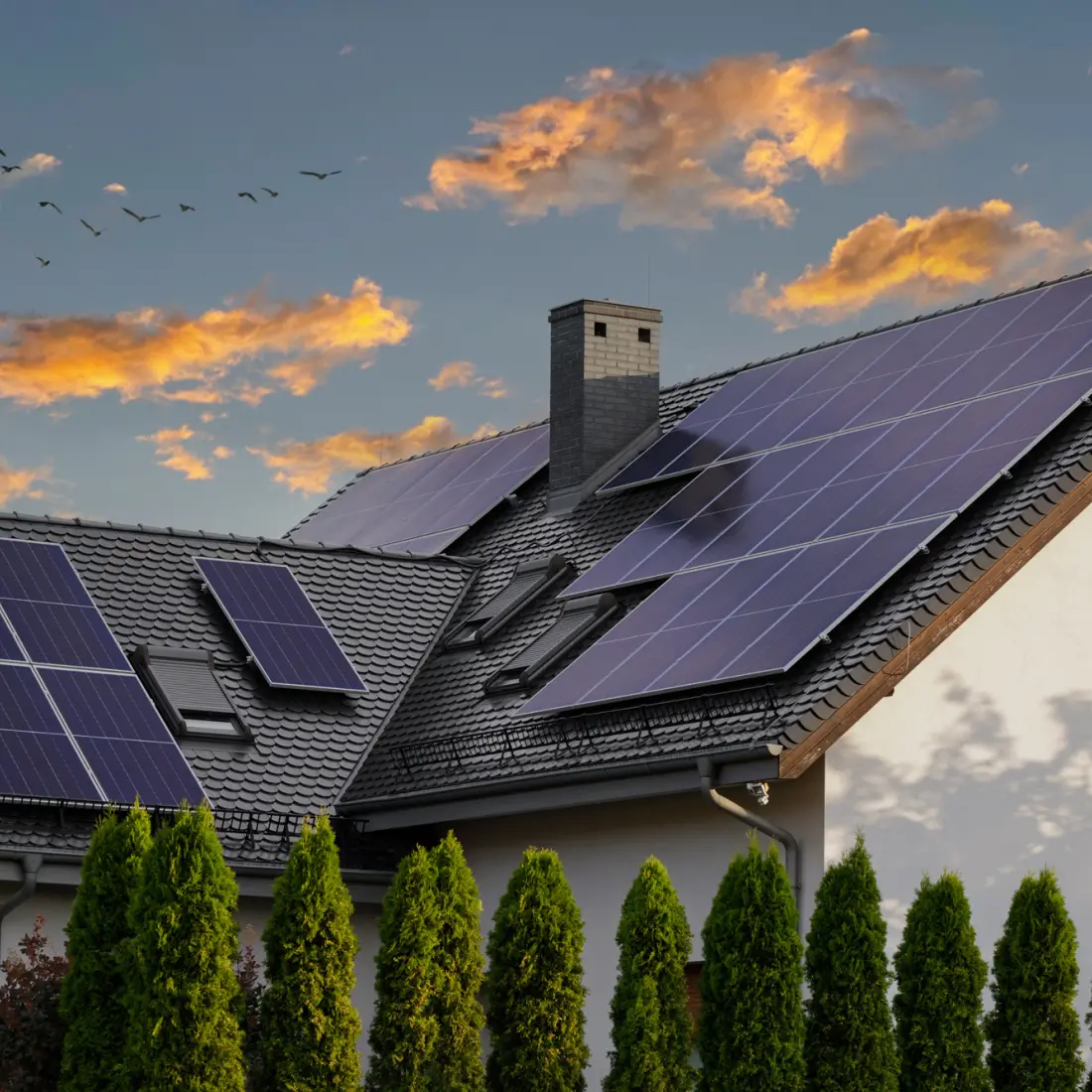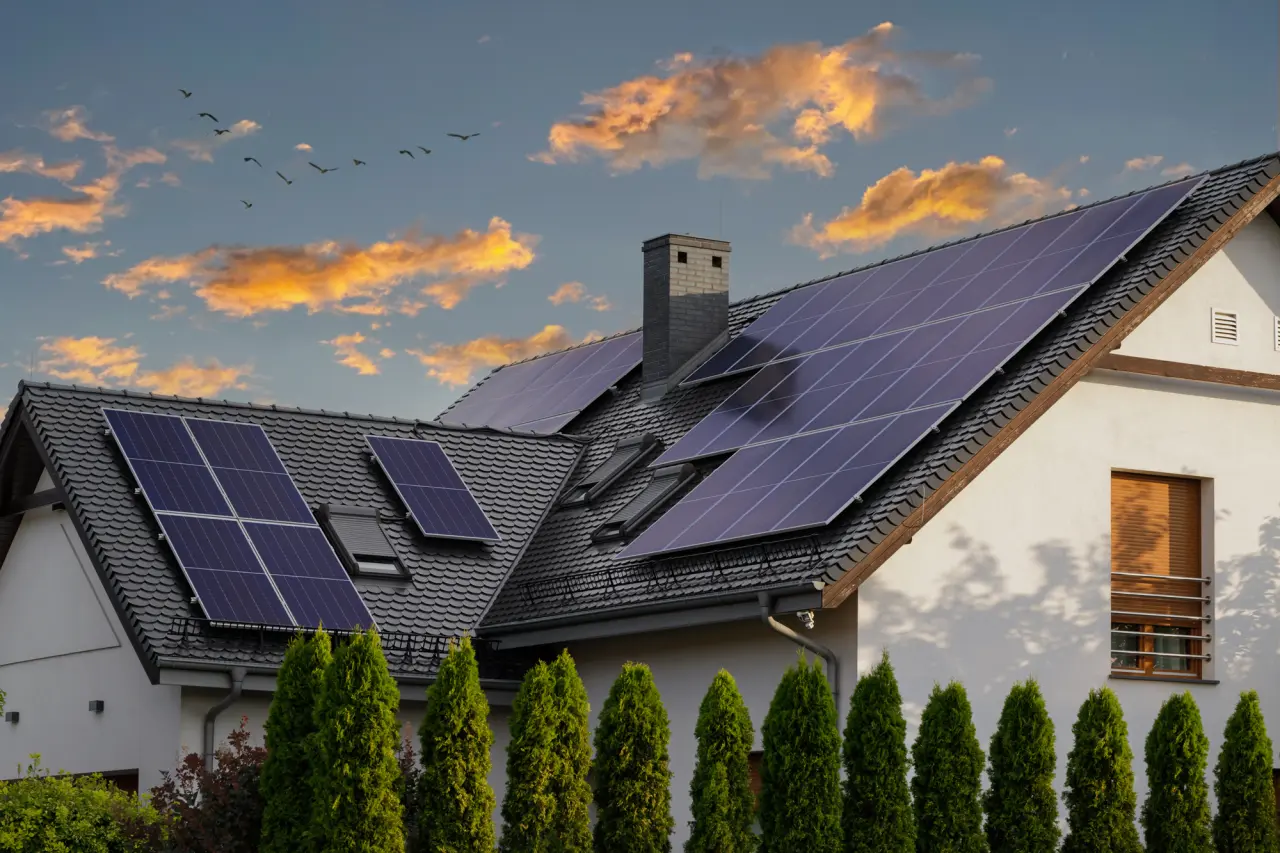Self-sustaining communities and why they are becoming more important


A self-sustaining community can meet its needs without relying on external systems or resources. However, this doesn't necessarily mean complete isolation from the wider world but creating a community that is adaptable and capable of supporting itself in a resource-efficient manner.
As the world navigates the impacts of climate change and leverages technological advancements, efforts to achieve self-sustainability are becoming increasingly valuable. Communities recognize the need to adapt to environmental shifts and reduce their carbon footprint, and thankfully, new technologies are making it more feasible to do that and much more.
Whether it's focusing on food sovereignty, investing in renewable energy, building self-sufficient housing or enhancing recycling efforts, the goal remains the same: to establish a resilient, self-supporting system. These efforts are not just responses to climate challenges; they're investments in a more sustainable and secure future.
Economic concerns
Economic challenges, such as job displacement due to technological advancements and the domination of mega-corporations, are big issues many face. Self-sustaining communities can be part of the solution. By focusing on local resources and skills, they create jobs within the community that are less likely to be automated or outsourced. For instance, a community with an organic farm provides produce and creates employment opportunities.
Likewise, having a farmer's market or art fair can showcase local products and talent, providing revenue from visitors. This retains wealth, boosts the local economy and counters the influence of big corporations. Additionally, promoting small businesses and supporting local entrepreneurs can foster economic stability and diversity within the community.
Extreme weather
2023 was the hottest year Earth has experienced. Plus, there were raging wildfires in Hawaii and several deadly earthquakes in Asian countries. The world is experiencing more intense and frequent natural disasters. These events can devastate communities that aren't built to withstand them.
Power outages caused by damaged infrastructure can leave entire communities without electricity for days or weeks. This affects access to essential services like water, medical care and communication, disrupting daily life. Self-reliance provides a critical fallback in these situations:
Communities that invest in renewable energy sources, such as solar panels, can maintain power during grid disruptions.
Unique innovations such as solar-powered air conditioners offer potential solutions even when the broader grid fails.
Communities with water storage and filtration systems can maintain access to clean water during natural disasters.
Community farms and gardens provide a local source of food when supply chains are disrupted.
To gain deeper insights into how these uses contribute to self-sustaining communities, let's explore some of the unique applications. Solar-powered air conditioners ensure livable conditions during heat waves or outages. Solar roads generate electricity for streetlights and traffic systems, and even feed energy back to the grid or homes. This decentralized power generation empowers communities to be more resilient and self-sustaining during challenging times.
Strategic community growth
Self-sustaining communities have control over growth planning, development timelines and community involvement. This differs from traditional models, where external investors and corporations often dictate the direction and pace of growth. By focusing on sustainable practices, communities can support a growing population without depleting resources or compromising quality of life.
For example, Finca Bellavista, a self-sustaining community in Costa Rica, aims to live off-grid and be fully self-sufficient. Residents actively participate in planning, building homes and growing food, nurturing a strong connection to the land. The community relies entirely on solar power for energy production.
Communities that strategically plan growth to include infrastructure investments for self-sustainability, such as installing solar panels, ground mounts and roof mounts, set a foundation while preparing for population growth and demographic changes.
Skill development
Community self-sustainment efforts are a perfect opportunity to teach and hone skills.
Gardens teach residents about organic farming, which provides education and training on sustainable agriculture.
An energy co-op could provide technical training and teach installation, maintenance, and energy management skills.
A community-owned business may provide jobs and training in various fields, from customer service to marketing to bookkeeping.
These skills are valuable in their own right, and a community with a wide range of skills is more resilient, adaptable and capable.
Independence
Community self-sustainment means greater control over the economy, food supplies and energy sources. Additionally, when individuals in the community have access to skills and resources that enable them to provide for themselves and their families, they become less dependent on traditional employment structures. This results in greater financial stability and freedom:
In a self-sustaining community, individuals can supplement their incomes by growing and selling goods at local markets or providing services to other residents.
Communities with renewable energy sources are less vulnerable to fluctuations in energy prices and do not rely on external corporations for electricity.
A self-sufficient community, provides basic needs like food, healthcare and education locally, reducing dependence on government aid.
People relying less on external sources may feel more empowered and confident in navigating life's challenges.
Sustainability
Community self-sustainment is closely tied to environmental sustainability. With close control and understanding of their resources, self-sustaining communities can better manage and conserve them. This includes:
Implementing sustainable farming practices to preserve soil health and biodiversity;
Encouraging waste reduction and recycling initiatives to decrease the amount of waste sent to landfills;
Incorporating sustainable building practices to minimize the environmental impact of construction and housing.
Moreover, as these communities grow and thrive, they can serve as examples and advocates for sustainable living.
A great example is the Danish island of Samsø, which has become entirely self-sufficient in renewable energy. With the help of wind turbines, solar panels and biomass plants, the island meets its own energy needs and exports surplus electricity to the mainland.

Physical wellness
Community self-sustainment can also have a positive impact on your physical well-being:
Access to locally grown, organic food can improve nutrition and decrease exposure to harmful pesticides.
Cleaner energy sources can enhance the quality of the air.
Promoting active transportation options like biking or walking can boost physical fitness while reducing air pollution.
The city of Ghent in Belgium, for instance, has promoted "veggie days" to encourage residents to eat more plant-based foods. This initiative supports local farmers and promotes healthier eating habits among the city's residents.
Cultural development
Self-sustainment fosters cultural development in communities by bringing together diverse individuals with different backgrounds and beliefs. This leads to an open-minded and accepting community where new ideas and perspectives for sustainable living thrive, and relationships are built.
Here are examples of how this could look in your community:
Community gardens may bring people of different ages, cultures and income levels together to share knowledge, resources and stories.
A sustainable living workshop can bring in experts and community members to discuss and learn about different aspects of sustainability.
A local farmer's market can provide a space for people to support and connect with their local farmers and try new foods and recipes from different cultures.
In the small town of Kamikatsu, Japan, residents work together to achieve a zero-waste lifestyle. Their recycling program requires residents to sort waste into 45 categories, improving waste reduction and community unity.
Supporting local self-sustainability initiatives can have wide-ranging benefits beyond meeting basic needs. Join your community and get involved to make a positive impact.